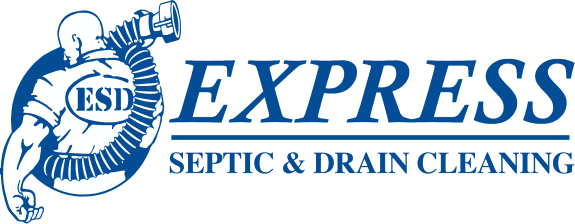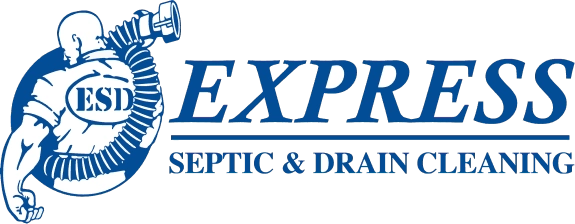The wastewater or effluence that flows out of your Nampa, ID home needs a place to go. For most properties, this is the municipal sewer system. All of their wastewater pipes converge on a single sewer line that leads to the municipal sewer main. If you live in a remote neighborhood or have poor drainage, having a septic system installed might be a necessary or better choice. However, not all septic systems are the same. While most homeowners with septic systems use underground tanks to capture and retain solid waste, there are a number of highly effective options in tankless septic systems. Read on to find out what these are, how they work, and when they’re used.
What Septic Tanks Do and Why They’re Important
When solid waste and wastewater first enter a standard septic system, it’s held in an underground tank. This allows solid materials like toilet paper and human waste to settle at the bottom. Enzymes within the tank break this waste down to a semi-solid sludge that must regularly be pumped out. Oil, grease, and other fats float atop this scum, and the remaining wastewater enters a nearby drain field. In the drain field, this effluence is cleaned by soils and soil microbes until it eventually becomes part of local groundwater supplies.
The Top Reasons Why Your Nampa Property Might Be Unsuitable for a Septic Tank
Septic systems with underground tanks are easily the most popular septic system type throughout the nation. However, not all properties can accommodate buried tanks. Soil conditions, lot sizes, and the presence of underground barriers are just a few factors that might render your home unsuitable for this addition.
Having a septic tank on your grounds might not be an option if you have:
- Bedrock too close to the surface
- Insufficient area for ensuring code-compliant clearance
- Nearby bodies of water that are sensitive to tank-related pollution
- Land that won’t “percolate”
When effluence moves through drain field soils, these soils percolate or “perk” by retaining wastewater and extracting its contaminants. Having underground soils that are too dry, compacted, or limited in their ability to absorb results in mushy yards, backed-up septic systems, and whole-house backups among other problems. Fortunately, there are several alternatives to septic tanks that are impervious to these and other issues.
Plastic Chamber Leach Fields
Rather than being an alternative to septic tanks, plastic chamber leach fields are an alternative to septic systems altogether. These solutions work best for homes on land with high water tables or nearby bodies of water that must be protected. They’re also a common choice for homes on smaller-sized lots. They’re comprised of half-pipe chambers made from lightweight polyethylene plastic. Effluence moves through these crescent-shaped chambers and seeps into the soil that lies just beneath their down-facing, open ends. This treats the wastewater and gradually adds it to nearby groundwater.
Plastic chamber leach fields are especially helpful in locations in which wastewater amounts are constantly changing. For instance, people often have these installed on vacation properties, cabins, and in winter or summer homes.
How Sand Filter Septic Systems Work
Sand filter septic systems are known for greatly reducing coliform bacteria from fecal waste, nitrifying ammonia, and eliminating solid, organic debris. Sand filters move effluence through sand and oxygen to extract impurities. Although it has a decidedly tank-like design, this system type is not attached to a leach field or drain field, and it works well on many micro-sized properties.
Sand filter systems can be built above or below ground. They’re comprised of sand-filled boxes that are either lined with PVC or fashioned from concrete. Low pressure moves effluence through the pipes at the top of a sand filter system and then pushes it through contaminant-extracting sands. This system must have a pump tank and a septic tank or plastic chamber to serve as a comprehensive solution. Sand filters work well on properties with high water tables, and they offer high-level wastewater treatment.
Using Pressurized Dozing Systems
Pressurized dozing isn’t a standalone alternative to a septic tank. Instead, it can be seamlessly paired with sand filter septic systems, plastic chamber leach fields, and many other tank-free septic designs. These systems use controlled pressure to evenly distribute effluence throughout leach fields. They’re also often used just after septic tanks have failed to rehabilitate the land and get things back up and running smoothly.
Mound Systems and When to Install Them
If you have shallow soil due to underlying bedrock, a mound system might be your best choice. These systems have large sand mounds that taper into drain trenches. They create the depth that homeowners can’t access when digging by leveraging vertical space. Effluence flows to mound systems from sand filters, tanks, or plastic, above-ground chambers. It’s then moved through sand and soil for treatment and eventually discharged into the trench and nearby soils.
Like pressurized dozing systems, mound systems aren’t complete septic solutions by themselves. You’ll still need a way to capture and retain solid waste. When septic tanks aren’t viable options, plastic, aboveground chambers will work instead.
Drip Irrigation or Drip Distribution
Drip irrigation is yet another alternative to the standard septic system that still requires a tank or another holding chamber. Like above-ground sand filter systems, it makes septic wastewater treatment a possibility when the water table is high. However, they do so without making it necessary for plumbers to construct large, onsite mounds or make other significant land modifications. Instead, drip laterals are buried beneath just 6 to 12 inches of earth and an electrically powered drip distribution system releases effluence into a nearby drained field at timed intervals. This keeps drain fields from becoming overwhelmed, minimizes the risk of soil saturation, and effectively meets the needs of small-sized properties and lands with other challenges.
Drip irrigation/distribution systems are fairly high maintenance compared to other alternatives. They also require the installation of sizable drip tanks in addition to plastic chambers or other aboveground tank alternatives.
What to Know About the Common Alternatives to Septic Tanks
All septic systems require some manner of tank for separating and holding solid waste. However, aboveground chambers, half-pipes, and other structures make it possible for homeowners to overcome major barriers to underground tank installation. When choosing a septic system for your home, it’s important to work with a seasoned plumber who understands the complete range of septic system alternatives. This will give you the benefit of a needs-specific installation that accounts for factors like soil conditions, the water table, digging abilities, and more. Although septic tanks work well in the right locations and environments, they aren’t viable or effective wastewater management systems for all households.
We’re committed to helping residents of Nampa, ID, find the best wastewater treatment systems for their homes. We offer septic tank pumping, location, repair, and inspection services. We also offer enzyme treatments and preventative maintenance plans. To schedule an appointment, contact Express Septic & Drain Cleaning today.


